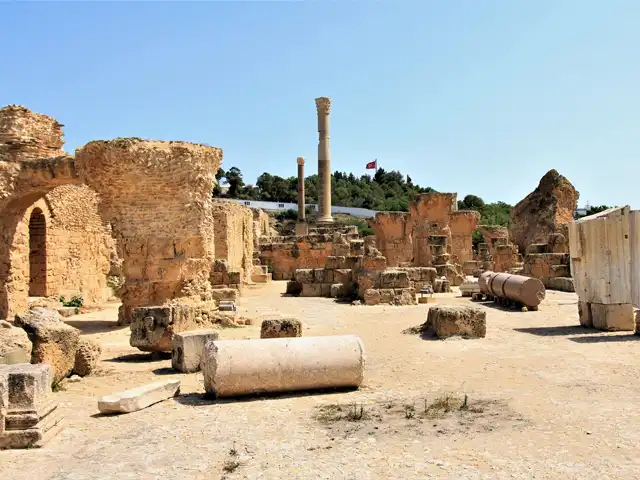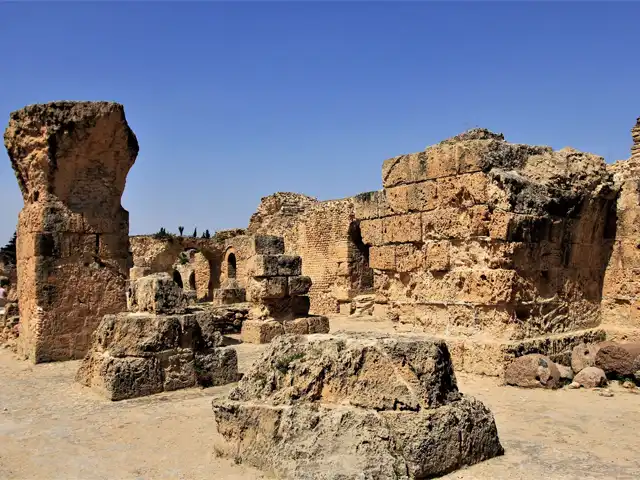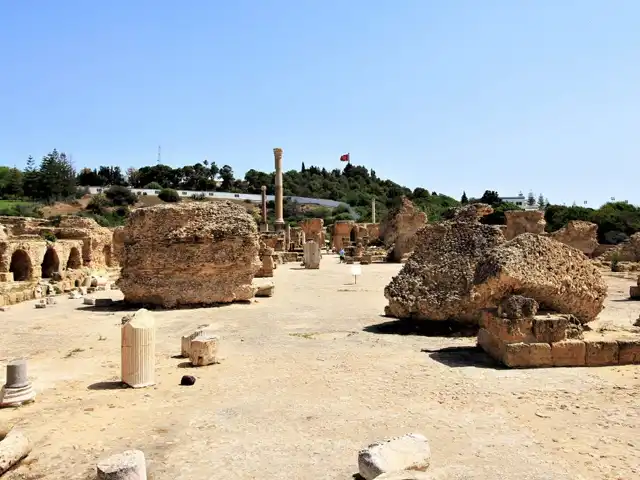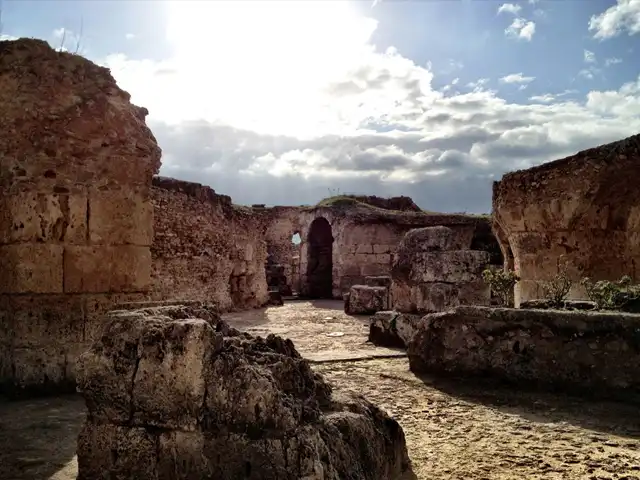The Antonine Baths
The Antonine Baths, located by the sea in the ancient city of Carthage, stand as a precious testament to the grandeur of Roman Africa. Just steps from Tunis, Tunisia’s vibrant capital, these baths once symbolized Roman luxury and architectural ingenuity.
Built under Emperor Antoninus in 165 AD, after fifteen years of work initiated under Hadrian, this monumental complex offered a lavish setting. The baths were among the largest in the Empire, with majestic domes crowning three levels dedicated to wellness, where warmth, steam, and water blended harmoniously.
Evocative Ruins
Today, their splendor has faded, leaving behind imposing ruins that whisper of a bygone era. Only the lower levels, once bustling with the staff and machinery that kept the baths running, remain. Yet, these remnants still inspire awe. They allow visitors to grasp the impressive scale of the complex and the Roman ingenuity that once animated it.
A marked route guides visitors through the ancient complex, revealing new wonders at each step.
The Surrounding Gardens and Nearby Remnants
Surrounding the baths, gardens invite further exploration. Remains of a 7th-century Christian chapel and a 4th-century “scola” recall Carthage’s long history, from its Punic roots to its role as a Christian stronghold. Wandering these ruins is to feel the weight of centuries, where various civilizations left their mark.
A Journey Back in Time
Standing on these sunlit stones, with the Mediterranean breeze brushing your skin, you can almost imagine the vibrant life that once filled these walls. Roman citizens came here to bathe, socialize, and escape the heat of the day. Even in ruins, the Antonine Baths remain a majestic symbol of the past, offering a glimpse into the life of Carthage and the vast empire that once ruled the world.
The Antonine Baths in pictures





